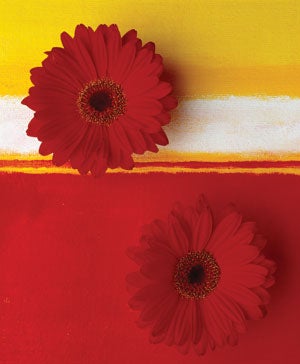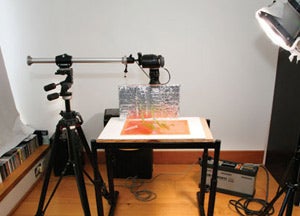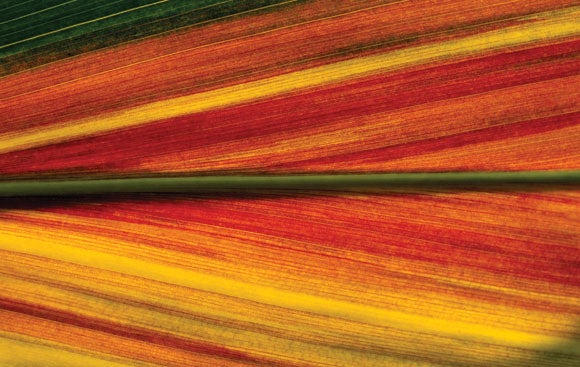 1. Natural light
1. Natural light
If you don’t have studio lighting, natural daylight can be just as effective. Try to find the biggest window in your house and consider the direction that the window faces. For example, a north-facing window will provide a cool and even lighting throughout the day. Tape large sheets of tracing paper to the window to diffuse harsh sunlight, and use reflectors to create a fill-in light and to avoid harsh shadows.
2. Tricks of the Trade
Trestle legs – available from DIY stores, these allow you to create a working area near your preferred light source. Adjustable legs mean you can work at a comfortable height and save your back!
Blu-Tak – Small amounts can hold delicate petals in place, while larger amounts firmly hold reflectors.
Water spray – Use sparingly to refresh flowers or add a little oil to create more stable droplets of water for leaf macros.
Reflectors – If you don’t have commercial reflectors, save foil food packaging to create your own mini reflectors.
Plastic Tubes – Can be used to help preserve the flower’s life while it is being photographed, and removes the need for a vase.
 3. Essential Equipment
3. Essential Equipment
Tripod – Essential for close-up work and home studio or low-light conditions. An ideal tripod for outdoor close-up flower work will need to be able to get very low, as your subject matter may only be a few feet higher than ground level.
Macro Lens – Vital for capturing close-up details. A longer lens with a macro setting allows a greater working distance between the subject and lens. Extension tubes can be added to prime lenses if you don’t have a dedicated macro lens. Small aperture lenses of around f/1.4-2.8 are more expensive and only necessary if you want an extreme amount of defocus and less contrast.
Cable or Remote Release – Prevents camera shake or any movement of a delicate subject. Also useful if working alone as you can hold reflectors near your subject and still be able to release the shutter.

4. The Right Subject
Simple graphic-shaped flowers such as gerberas have stunning visual impact and come in a great range of strong colours. Roses are great for texture and close-up shots. Multiple flower heads placed close together fill the frame for full impact. Exotic leaves often used to fill out a bouquet can make for an interesting abstract, like this stripy leaf shown here. Also, try to find a good local florist who can supply the best quality of flowers. They might also be able to get a particular flower or plant from their local flower wholesaler. While this does mean you’ll have to buy 10 or more stems of one particular flower, it means that you‚Äôll be able to get the very best quality and a real variety. If you buy through your florist it will cost more than wholesale but it will save you having to get up at 5am!




